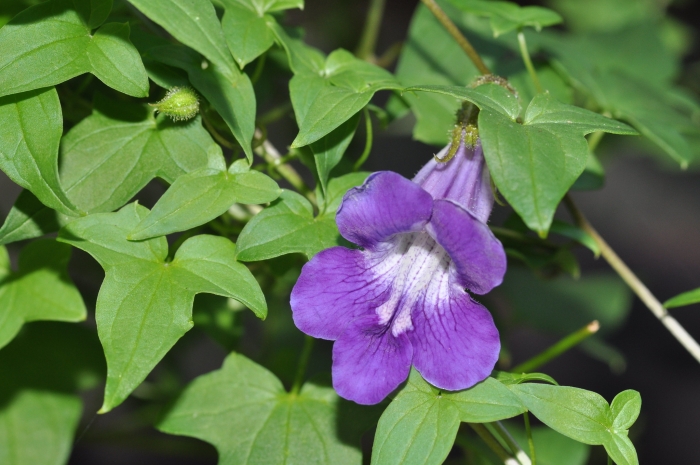Violet Twining Snapdragon
(Maurandella antirrhiniflora)
Violet Twining Snapdragon (Maurandella antirrhiniflora)
/
/

Dean Wm. Taylor
CC BY 2.0





















































Estimated Native Range
Summary
This vine is valued for its ability to attract hummingbirds and butterflies, making it a beneficial addition to wildlife gardens. It is used for vertical interest in gardens, on trellises, fences, and arbors. It is relatively easy to maintain, requiring only moderate water once established and thriving in a variety of soil types with good drainage. While it prefers full sun to part shade, it is adaptable to less ideal conditions. There are no major disease problems, but it can be susceptible to aphids. Gardeners should be aware that it may require regular pruning to keep it within bounds and to promote more vigorous growth.CC BY-SA 4.0
Plant Description
- Plant Type: Vine
- Height: 6-9 feet
- Width: 6-9 feet
- Growth Rate: Moderate
- Flower Color: Pink, Purple, Red, White
- Flowering Season: Spring
- Leaf Retention: Deciduous
Growth Requirements
- Sun: Full Sun, Part Shade
- Water: Medium
- Drainage: Medium
Common Uses
Bee Garden, Bird Garden, Butterfly Garden, Deer Resistant, Drought Tolerant, Fragrant, Hummingbird Garden, Low Maintenance, Potted Plant, Rock Garden, Salt Tolerant
Natural Habitat
native to open woodlands, forest edges, and riparian areas in the Southwestern USA and Mexico
Other Names
Common Names: Roving Sailor, Snapdragon-Vine, Twining-Foxglove, Climbing Snapdragon
Scientific Names: , Maurandella antirrhiniflora, Maurandya antirrhiniflora, Maurandya antirrhiniflora subsp. antirrhiniflora, Antirrhinum maurandioides, Antirrhinum antirrhiniflorum, Asarina antirrhiniflora, Maurandella hederaefolia, Ipomoea nealleyi, Maurandya personata
GBIF Accepted Name: Maurandella antirrhiniflora (Humb. & Bonpl. ex Willd.) Rothm.